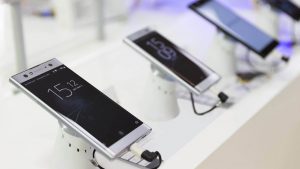
Nowadays, in the times of online shopping, the first question which probably comes to your mind sounds “Is the retail dying?”. Well, there is nothing further from the truth! In fact, quite the opposite – we can even talk about the retail renaissance. Of course, the stores have to reinvent themselves in a world where the digital reigns but it is a positive change.
For example in Milan and other big cities, the flagship stores are bustling and attracting hundreds of people every day and there are more and more new stores. One of the most significant change, in the already existing ones, refers to the space restructuration (but not only in the physical sense).
The modern retail covers the experiential dimension, where people can interact with the products and feel the brand’s vibes. A salesman is no longer a person who just sells the product, it becomes a professional consultant who can advise, help and represent a brand. In-store shelves and displays are no longer only aimed to expose product, but they have turned into a real point of interaction between brand and a consumer.
The changes have come along with the evolution of consumer behaviour over the years, influenced by the digital transformation: everything is super-connected thanks to the Internet, people can easily do online shopping, comparing prices, saving money…and time. Actually, you can purchase products without leaving your house (or let’s be honest – your office). But the truth is that those customers will still visit stores, as long as the stores are able to provide something, which cannot be provided by online word – the physical experience. And here are questions which are an integral part of retail analytics:
- How to monitor this experience?
- How to understand people’s behaviour in the store?
- How to measure the engagement rate and verify the success of your strategy?
Nowadays, there is no room for acting blindly. If there is only one thing that physical shops should copy from the online business is the ability to get data insight to improve (true, honest and not-virtual) communication on the brand-consumer level. And that is why the future of an in-store strategy is based on clever materials – the key to getting retail analytics.
Not only the design
The design can be a way of understanding the store as a media; it is a real touch point, which enables interaction with the brand.
Starting from the beginning, the materials are intelligent if they are designed with intelligence. At first, the design must respond to different needs and guidelines. If it’s true that in the flagship stores each individual element is a part of an organic project of the shop, the same does not apply to the branded areas in large-scale distributors or retailers and while industry events. In that case, the project must be infallible from the exhibition side and the communication needs of the brand.
But as we mentioned at the beginning, nowadays the design is not only beautiful. Have you ever thought that display materials can be capable to monitor the behaviour of the customers in the branded area? Well, at Free-Way everything is possible so we have put theory into practice.
From now, all the in-store marketing materials like experiential islands, totems and simple display materials can not only engage customers but also collect information about their behaviour and monitor it.
Thanks to the technology inside, clever materials can detect the presence of customers in the specified area. When they are passing through this zone, they are detected as an impression, whereas they stop they are treated as an engagement. The correlation between impression and engagement is called a conversion rate that indicates which amount of traffic has been transformed into interaction. It describes the effectiveness of display materials, the totem, product exposure and even the dedicated promoter.
These data over time can create more detailed indicators like heat maps. This insight presents an area with the highest density and with the highest turnout, but also moments of peak presence during the day, week and even month.
Does it sound familiar? Just like web analytics, isn’t it? The purpose of clever materials in practice is to analyze the branded area as an Internet website: trends can highlight areas with the largest interest, you can measure the success of your campaign (for example by conversion rate) and get to know more about a consumer-brand experience.
The coolest thing about clever materials is that you can use them in different situations:
- Monitoring the area, in general, to understand the peak moments in the store over the time
- Getting the insight about the best-performing stores by installing clever materials in each of them
- Measuring the return of single in-store product promotion: effectiveness of flyers, the presence of a promoter or the new design.
This retail analytics can be a starting point of the new field strategy or implementing significant improvement to the present one.
No beacon inside
The technology inside clever materials can detect mobile devices like tablets and smartphones with a connection to WiFi turned on. The great news is that over 80% of people have their WiFi mode on while shopping.
No, we are not talking about beacon technology! Clever materials are based on Plug & Play method, which means that sensors inside, do not require any other external applications on mobile devices. There are no push messages to the customers while shopping so they can enjoy their time without any disturbance.
Why materials?
The materials are always branded so even if in the store there are more stands and other brands exposed, the data collected thanks to the clever materials will always refer to the specific brand. You will receive data which are cleaned from any type of insight about other brands or shoppers’ actions.
This technology is based on the observation of a behavioural flow: that is why it requires a display point installed for a specified time to collect data and visualise a trend. It is extremely important to place clever materials in the right place in a store (for example not directly at the entrance). Only, in that case, we can get the insight about undisturbed customer behaviour – and that is why (once again) it is different from beacon technology. Clever materials are not based on proximity marketing so clients can enjoy their shopping and they are not influenced by any push messages.
English version Patrycja Okowicka
You may also read Consumer Loyalty: it’s time for a new language




